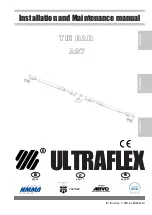
127
The
central upper map
(corneal thickness) in
Figure 157
, shows that the shape of a normal cornea
is a negative meniscus lens (i.e., the back surface radius of curvature is steeper than the front)
which is thinnest at its optical center and thickens by the square of the distance from the center.
The positive total power is a result of air in front and aqueous behind. The shape of the central color
zones should be circular if no significant astigmatism is present and elliptical if there is astigmatism.
In either case the small black circle (TP) should be at the center of the ellipse (or circle). It will be
temporal and either inferior or superiorly to the apex (vertex normal of Purkinje-Sanson Reflex I,
white circle), which is the normal center of all maps. This point is also very near the visual axis and
is usually considered to be this point. The dashed black circle is the border of the pupil and the black
dot is the centroid of the pupil. The pupil center is also temporal to the apex and may also be inferior
or superior. The angle between the apex (visual axis) and optical center (TP of the cornea) is referred
to as angle alpha and has both a horizontal and a vertical component. The angle between the apex
(visual axis) and the pupil center is known as angle kappa and also has a horizontal and a vertical
component. The normal values for TP of the cornea are shown in
Table 3
.
Thinnest pachymetry*
thinnest
lower limit
upper limit
pach
thinnest
pach
thinnest
pach
(μm)
(μm)
(μm)
mean
543
--
--
± SD
33
509
576
±2 SD
67
476
609
±3 SD
100
442
643
The central lower map (relative pachymetry)(RP)
(Figure 157)
shows why a negative meniscus lens
has a predictable thickness from its center to periphery, the percentage above or below this value at
each point may be calculated. The RP map shows these values at all points. . The minimum RP values
are shown in
Table 4
.
Minimum RP*
thinnest
lower limit
pach
thinnest
pach
(μm)
(μm)
mean
-2.5
--
-SD
-2.6
-5.1
-2 SD
-5.1
-7.7
-3 SD
-7.7
-10.2
The
upper right map
[elevation (front)] in
Figure 157
, shows the elevation in μm above the BFTEF
determined over an 8 mm zone. The Q-value of the ellipsoid for the front surface is fixed at -0.22
(eccentricity =+0.47) and the principal radii are varied for the best least square fit of the surface. The
Q-value of the ellipsoid for the back surface is fixed at -0.20 (eccentricity =+0.45) and the principal
radii are varied for the best least square fit of the surface. Plus (+) values for elevation are above
the reference surface and negative values (-) are below and are all given in μm. The Q-values for
the BFTEF are slightly less (-0.22 versus -0.26 for the front and -0.20 versus -0.24 for the back) for
both elevation maps because it is the average value for the population when “fit” over an 8 mm zone
rather than the normal 6 mm zone. Normal values for front elevations near the minimum RP
(Table 5)
and maximum elevations at any location
(Table 6)
for the front surface are given.
Table 3: Thinnest pachymetry
(*N = 1243 normal eyes,
internal, unpublished data
by J. T. Holladay)
Table 4: Min RP (*N = 1243 normal
eyes, internal, unpublished
data by J. T. Holladay)
17 Holladay Report & Holladay EKR65 Detail Report















































